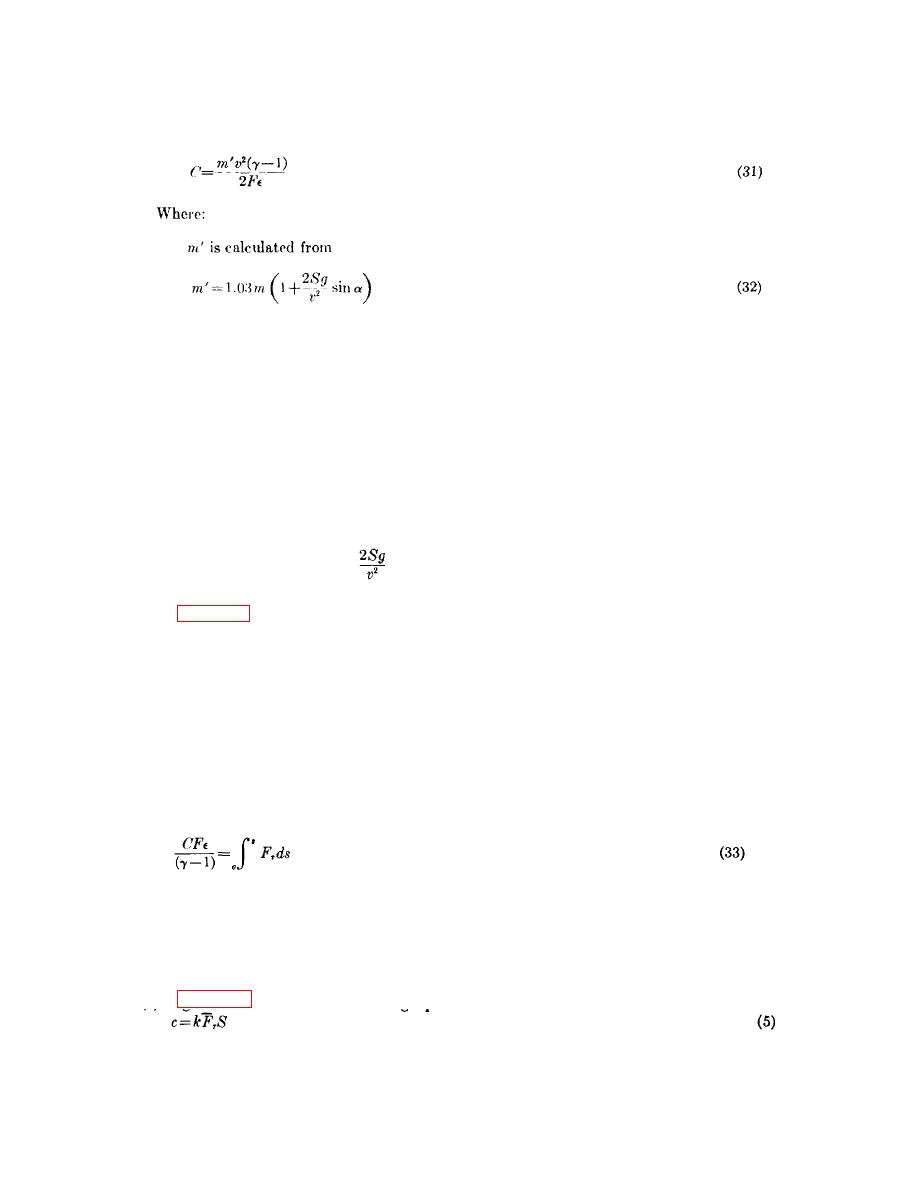
d. Estimation of Propellant Charge Weight.
(1) Catapults and removers.
(a) The propellant charge weight in pounds, C, required for a catapult or remover may be estimated
using equation (31).
and where
F = propellant impetus
e = overall efficiency (use 0.10 as a representative figure for catapults and removers)
y = ratio of specific heats
m = propelled mass
m' = modified propelled mass
a = angle between direction of thrust and-horizontal
V = velocity at separation
S = stroke to separation
(b) In the equation for modified propelled mass, the factor 1.03 is used to account for the affects of
friction and the quantity
sin a corrects for the angle of thrust with the horizontal. For downward
ejection, the plus sign in equation (32) would be replaced by a minus sign.
2
C=kWv
(4)
This equation is a modification of equation (31). The constant, k, was determined by letting γ =1.25,
e = 0.10, F = 3.1X105 for catapults and 3.6X105 ft lb/lb for removers, and m' = 1.1m. In addition, k
includes a term to permit propelled weight to be substituted for mass and another term to give the
-5
2
2
answer (charge weight) in grams. The constant was found to be: k =6.25 x10 gm sec /lb ft for
-1
2
2
catapults, and 5.38X10 gm sec /lb ft for removers.
(2) Thrusters.
(a) The charge weight for a thruster may be estimated using equation (33).
Where:
F = total resistive force
S = piston stroke
e = overall efficiency (0.10 is a representative value)
γ = ratio of specific heats
55


